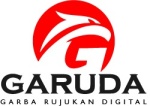FLIPBOOK DIGITAL SISTEM PEREDARAN DARAH MANUSIA: DAMPAKNYA TERHADAP HASIL BELAJAR SISWA
Sari
Ketersediaan sumber belajar berbasis digital masih belum merata ke seluruh sekolah di Indonesia. Guru belum punya waktu untuk mendesain sendiri dan menyesuaikan dengan kebutuhan siswa. Kondisi ini menyebabkan hasil belajar siswa menurun. Penelitian ini bertujuan untuk mengungkap dampak penggunaan flipbook digital terhadap hasil belajar siswa. Desain one group pre-test post-test digunakan untuk 26 siswa. Seluruh siswanya duduk di bangku kelas dua (kelas VIII) di salah satu SMP Negeri di Manokwari. Sebanyak sepuluh item pilihan ganda digunakan untuk mengukur hasil belajar siswa. Analisis data menggunakan uji Wilcoxon dan juga dilakukan perhitungan n-gain. Temuan menunjukkan bahwa rata-rata hasil belajar siswa sebelum menggunakan flipbook digital adalah 57,69. Pengukuran pada akhir pembelajaran menunjukkan adanya peningkatan prestasi belajar siswa dengan skor rata-rata sebesar 96,92. Selisih peningkatan hasil belajar siswa sebesar 39,23. Hasil uji Wilcoxon menunjukkan p = 0,000 < 0,005. Temuan ini menunjukkan bahwa flipbook digital berdampak pada hasil belajar siswa. Hasil perhitungan n-gain menunjukkan bahwa peningkatan prestasi belajar siswa berada pada kategori tinggi (0,93). Flipbook digital mempunyai dampak yang kuat terhadap hasil belajar siswa, dimana mereka dapat mencapai peningkatan prestasi yang tinggi. Flipbook digital berhasil meningkatkan hasil belajar siswa dalam pembelajaran sistem peredaran darah manusia.
Kata Kunci
Teks Lengkap:
PDFReferensi
Afwan, B., Suryani, N., & Ardianto, D. T. (2020). The Development of Digital Flipbook Media Based on the 5 Hours Battle of Kalianda upon High School History Materials. Budapest International Research and Critics Institute (BIRCI-Journal): Humanities and Social Sciences, 3(2), 1003–1012. https://doi.org/10.33258/birci.v3i2.930
Alfailakawi, A. (2022). The Impact Of The Working Environment And Learning ScienceIn The Electronic Learning Systems Used In Education From The Point Of View Of The Faculty At The Faculty Of Basic EducationIn Kuwait. Journal of Positive School Psychology, 6(12), 1423–1444. https://journalppw.com/index.php/jpsp/article/view/14947
Anshari, M., Alas, Y., & Guan, L. S. (2016). Developing online learning resources: Big data, social networks, and cloud computing to support pervasive knowledge. Education and Information Technologies, 21(6), 1663–1677. https://doi.org/10.1007/s10639-015-9407-3
Blaschke, L. M., & Hase, S. (2016). Heutagogy: A Holistic Framework for Creating Twenty-First-Century Self-determined Learners. In B. Gros, Kinshuk, & M. Maina (Eds.), The future of ubiquitous learning, lecture notes in educational technology (pp. 25–40). https://doi.org/10.1007/978-3-662-47724-3_2
Blayone, T. J. B., VanOostveen, R., Barber, W., DiGiuseppe, M., & Childs, E. (2017). Democratizing digital learning: Theorizing the fully online learning community model. International Journal of Educational Technology in Higher Education, 14(1), 13. https://doi.org/10.1186/s41239-017-0051-4
Bocconi, S., Kampylis, P., & Punie, Y. (2013). Framing ICT-enabled Innovation for Learning: The case of one-to-one learning initiatives in Europe. European Journal of Education, 48(1), 113–130. https://doi.org/10.1111/ejed.12021
Bond, M., Marín, V. I., Dolch, C., Bedenlier, S., & Zawacki-Richter, O. (2018). Digital transformation in German higher education: Student and teacher perceptions and usage of digital media. International Journal of Educational Technology in Higher Education, 15(1), 48. https://doi.org/10.1186/s41239-018-0130-1
Camilleri, M. A., & Camilleri, A. C. (2017). Digital Learning Resources and Ubiquitous Technologies in Education. Technology, Knowledge and Learning, 22(1), 65–82. https://doi.org/10.1007/s10758-016-9287-7
Christian-Ike, N. O., Nnalue, O. H., & Nwuba, I. S. (2024). The teachers’ awareness and utilisation of innovative strategies for teaching and learning in Awka South. Inornatus: Biology Education Journal, 4(1), 36–45. https://doi.org/10.30862/inornatus.v4i1.587
Dainamang, S. A., Praherdhiono, H., & Soepriyanto, Y. (2024). Design of learning python programming for informatics education student using cloud computing technology based on google colaboratory. Journal of Research in Instructional, 4(1), 111–120. https://doi.org/10.30862/jri.v4i1.367
Damayanti, A. M. S., Nurmayanti, N., & Syamsunir, S. (2024). Development of science flipbook to increase student learning activities. Journal of Research in Instructional, 4(2), 333–344. https://doi.org/10.30862/jri.v4i2.424
Damopolii, I., & Kurniadi, B. (2019). Training students metacognitive skill using mobile learning. Journal of Physics: Conference Series, 1317(1), 012185. https://doi.org/10.1088/1742-6596/1317/1/012185
Damopolii, I., & Nunaki, J. H. (2016). Pengembangan media pembelajaran komik IPA terpadu materi sistem pencernaan pada manusia. Pancaran Pendidikan, 5(3), 61–70. https://jurnal.unej.ac.id/index.php/pancaran/article/view/4052
Damopolii, I., Yohanita, A. M., Nurhidaya, N., & Murtijani, M. (2018). Meningkatkan keterampilan proses sains dan hasil belajar siswa melalui pembelajaran berbasis inkuiri. Jurnal Bioedukatika, 6(1), 22. https://doi.org/10.26555/bioedukatika.v6i1.8029
Dita, K. I., Tuririday, H. T., Damopolii, I., & Latjompoh, M. (2023). Designing the human circulatory system e-module to increase student achievement. Inornatus: Biology Education Journal, 3(2), 75–84. https://doi.org/10.30862/inornatus.v3i2.422
Fullan, M. (2013). Stratosphere: Integrating technology, pedagogy, and change knowledge. Pearson
Hadiapurwa, A., Listiana, A., & Efendi, E. E. (2021). Digital Flipbook as a Learning Media to Improve Visual Literacy for 4th Grade Students at SDN Abdi Negara. Ilmu Informasi Perpustakaan Dan Kearsipan, 10(1), 8. https://doi.org/10.24036/116158-0934
Hake, R. R. (1998). Interactive-engagement versus traditional methods: A six-thousand-student survey of mechanics test data for introductory physics courses. American Journal of Physics, 66(1), 64–74. https://doi.org/10.1119/1.18809
Hillmayr, D., Ziernwald, L., Reinhold, F., Hofer, S. I., & Reiss, K. M. (2020). The potential of digital tools to enhance mathematics and science learning in secondary schools: A context-specific meta-analysis. Computers & Education, 153, 103897. https://doi.org/10.1016/j.compedu.2020.103897
Horota, S., Damopolii, I., Kilmaskossu, J. P., & Nusantari, E. (2023). Development of an ethnobiology supplement book based on the study of medicinal plants in Wonawa District, Kepulauan Yapen Serui Regency. Inornatus: Biology Education Journal, 3(1), 40–49. https://doi.org/10.30862/inornatus.v3i1.421
Hung, W. (2023). The Other Side of the Promise: Some Precautions for Technology-Based Education. In S. Y. L. Chye & B. L. Chua (Eds.), Pedagogy and Psychology in Digital Education (pp. 227–238). Springer Nature Singapore. https://doi.org/10.1007/978-981-99-2107-2_13
Hussein, M. H., Ow, S. H., Cheong, L. S., Thong, M.-K., & Ale Ebrahim, N. (2019). Effects of Digital Game-Based Learning on Elementary Science Learning: A Systematic Review. IEEE Access, 7, 62465–62478. https://doi.org/10.1109/ACCESS.2019.2916324
Ibrahim, H., & Alqahtani, A. S. H. (2018). The Impact of Adopting Web 2.0-Based E-Book on Student Learning Skills. EURASIA Journal of Mathematics, Science and Technology Education, 14(6), 2509–2522. https://doi.org/10.29333/ejmste/90085
Ishaq, K., Mat Zin, N. A., Rosdi, F., Abid, A., & Ijaz, M. (2020). The Impact of ICT on Students’ Academic Performance in Public Private Sector Universities of Pakistan. International Journal of Innovative Technology and Exploring Engineering, 9(3), 1117–1121. https://doi.org/10.35940/ijitee.C8093.019320
Isnaeni, I., & Agustina, Y. (2018). An increase in learning outcome students is through the development of archive e-module based on the flipbook with discovery learning model. Jurnal Pendidikan Bisnis Dan Manajemen, 4(3), 125–129. https://doi.org/10.17977/um003v4i32018p125
Jeong, H., & Kim, A. (2015). The Digital Textbook in South Korea: Opportunities and Challenges. In T.-B. Lin, V. Chen, & C. S. Chai (Eds.), New Media and Learning in the 21st Century (pp. 77–91). https://doi.org/10.1007/978-981-287-326-2_6
Kaltakci Gurel, D., Eryilmaz, A., & McDermott, L. C. (2015). A Review and Comparison of Diagnostic Instruments to Identify Students’ Misconceptions in Science. EURASIA Journal of Mathematics, Science and Technology Education, 11(5), 989–1008. https://doi.org/10.12973/eurasia.2015.1369a
Kaynar, N., Sadik, O., & Boichuk, E. (2020). Technology in Early Childhood Education: Electronic Books for Improving Students’ Literacy Skills. TechTrends, 64(6), 911–921. https://doi.org/10.1007/s11528-020-00520-5
Khan, T., Johnston, K., & Ophoff, J. (2019). The Impact of an Augmented Reality Application on Learning Motivation of Students. Advances in Human-Computer Interaction, 2019, 1–14. https://doi.org/10.1155/2019/7208494
Li, X., & Bus, A. G. (2023). Efficacy of digital picture book enhancements grounded in multimedia learning principles: Dependent on age? Learning and Instruction, 85, 101749. https://doi.org/10.1016/j.learninstruc.2023.101749
Lodge, J. M., & Harrison, W. J. (2019). The Role of Attention in Learning in the Digital Age. The Yale Journal of Biology and Medicine, 92(1), 21–28. https://www.ncbi.nlm.nih.gov/pmc/articles/PMC6430174/
Margaryan, A., Littlejohn, A., & Vojt, G. (2011). Are digital natives a myth or reality? University students’ use of digital technologies. Computers & Education, 56(2), 429–440. https://doi.org/10.1016/j.compedu.2010.09.004
Marta, L. C. (2019). The Integration of Digital Devices into Learning Spaces According to the Needs of Primary and Secondary Teachers. TEM Journal, 8(4), 1351–1358. https://doi.org/doi.org/10.18421/TEM84-36
Mills, K. A. (2010). A Review of the “Digital Turn” in the New Literacy Studies. Review of Educational Research, 80(2), 246–271. https://doi.org/10.3102/0034654310364401
Nasir, N. I. R. F., Arifin, S., & Damopolii, I. (2023). The analysis of primary school student’s motivation toward science learning. Journal of Research in Instructional, 3(2), 258–270. https://doi.org/10.30862/jri.v3i2.281
Nasir, N. I. R. F., Mahanal, S., Ekawati, R., Damopolii, I., Supriyono, S., & Rahayuningsih, S. (2024). Primary school students’ knowledge about animal life cycle material: The survey study. Journal of Research in Instructional, 4(1), 253–262. https://doi.org/10.30862/jri.v4i1.320
Nouri, J., Zhang, L., Mannila, L., & Norén, E. (2020). Development of computational thinking, digital competence and 21 st century skills when learning programming in K-9. Education Inquiry, 11(1), 1–17. https://doi.org/10.1080/20004508.2019.1627844
Nwankwo, A. L., Ugwu, T. U., Ukala, G., & Benson, O. O. (2024). The effect of hands-on activity and problem-based learning on achievement of biology students in Enugu state. Inornatus: Biology Education Journal, 4(1), 46–56. https://doi.org/10.30862/inornatus.v4i1.574
Nwuba, I. S., Egwu, S. O., Awosika, O. F., & Osuafor, A. M. (2023). Examining of crossover instructional strategy toward biology students’ academic performance in secondary schools. Inornatus: Biology Education Journal, 3(2), 50–59. https://doi.org/10.30862/inornatus.v3i2.420
Paek, S., & Fulton, L. (2021). Digital Science Notebooks: A Tool for Supporting Scientific Literacy at the Elementary Level. TechTrends, 65(3), 359–370. https://doi.org/10.1007/s11528-020-00579-0
Putri, N. L. P. S. U., & Jayanta, I. N. L. (2023). Digital Practicum Module in Integrated Science for Elementary School Subjects. Journal of Education Technology, 7(2), 343–350. https://doi.org/10.23887/jet.v7i2.61398
Rahhali, M., Oughdir, L., Jedidi, Y., Lahmadi, Y., & El Khattabi, M. Z. (2022). E-learning Recommendation System Based on Cloud Computing. In S. Bennani, Y. Lakhrissi, G. Khaissidi, A. Mansouri, & Y. Khamlichi (Eds.), Lecture Notes in Electrical Engineering (Vol. 745, pp. 89–99). Springer. https://doi.org/10.1007/978-981-33-6893-4_9
Rahmah, F., Sirait, S. H. K., & Nunaki, J. H. (2023). The use of teams games tournament learning to increase students’ learning outcomes in classification of living things. Inornatus: Biology Education Journal, 3(1), 32–39. https://doi.org/10.30862/inornatus.v3i1.388
Rangga, B. E., Lidi, M. W., Daud, M. H., & Wolo, D. (2023). Student field trip to mangrove forests: The effect on learning outcomes. Inornatus: Biology Education Journal, 3(2), 60–66. https://doi.org/10.30862/inornatus.v3i2.416
Ratna, R. D. M., & Adlini, M. N. (2024). Problem-based learning assisted by virtual laboratory media: Its effect on students’ understanding of concepts in excretory system material. Journal of Research in Instructional, 4(1), 284–294. https://doi.org/10.30862/jri.v4i1.410
Ristanto, R. H., Rusdi, R., Mahardika, R. D., Darmawan, E., & Ismirawati, N. (2020). Digital Flipbook Imunopedia (DFI): A Development in Immune System e-Learning Media. International Journal of Interactive Mobile Technologies (iJIM), 14(19), 140–162. https://doi.org/10.3991/ijim.v14i19.16795
Riyanto, R., Amin, M., Suwono, H., & Lestari, U. (2020). The New Face of Digital Books in Genetic Learning: A Preliminary Development Study for Students’ Critical Thinking. International Journal of Emerging Technologies in Learning (iJET), 15(10), 175–190. https://doi.org/10.3991/ijet.v15i10.14321
Roemintoyo, R., & Budiarto, M. K. (2021). Flipbook as Innovation of Digital Learning Media: Preparing Education for Facing and Facilitating 21st Century Learning. Journal of Education Technology, 5(1), 8–13. https://doi.org/10.23887/jet.v%25vi%25i.32362
Sardone, N. B., & Devlin-Scherer, R. (2010). Teacher Candidate Responses to Digital Games. Journal of Research on Technology in Education, 42(4), 409–425. https://doi.org/10.1080/15391523.2010.10782558
Sasea, L. I., Ibrohim, I., & Sueb, S. (2023). The relationship of environmental knowledge and environmental care attitude of students. Inornatus: Biology Education Journal, 3(2), 85–91. https://doi.org/10.30862/inornatus.v3i2.426
Silahooy, P. V., Nunaki, J. H., Jeni, J., Wambrauw, H. L., Nasir, N. I. R. F., Damopolii, I., Siregar, N. N., & Budirianto, H. J. (2024). Papuan local wisdom and problem-based learning: Integrated into student books and its effect on students’ conservation attitudes. Inornatus: Biology Education Journal, 4(1), 57–68. https://doi.org/10.30862/inornatus.v4i1.568
Simple, J. (2017). Development and Field-Testing of A Flipbook on ‘ Vegetables in Diet ’ for Rural Women. Journal of Community Mobilization and Sustainable Development, 12(1), 136–140.
Sirait, S. H. K., Sremere, F. M., Nunaki, J. H., & Tuwo, M. (2024). Development of plant diversity flipbooks integrated local wisdom. Inornatus: Biology Education Journal, 4(1), 27–35. https://doi.org/10.30862/inornatus.v4i1.576
Sousa, M. J., & Rocha, Á. (2019). Digital learning: Developing skills for digital transformation of organizations. Future Generation Computer Systems, 91, 327–334. https://doi.org/10.1016/j.future.2018.08.048
Yomaki, E. K., Nunaki, J. H., Jeni, J., Mergwar, S. D. I., & Damopolii, I. (2023). Flipbook based on problem-based learning: Its development to bolster student critical thinking skills. AIP Conference Proceedings, 2614(1), 020022. https://doi.org/10.1063/5.0126212
DOI: http://dx.doi.org/10.31258/biogenesis.20.2.55-70
Refbacks
- Saat ini tidak ada refbacks.
Copyright (c):
Program Studi Pendidikan Biologi Fakultas Keguruan dan Ilmu Pendidikan Universitas Riau
Alamat Redaksi:
Kampus Binawidya KM 12,5 Simpang Baru, Kecamatan Tampan
Pekanbaru, Riau, Indonesia 28293
Program Studi Pendidikan Biologi
Fakultas Keguruan dan Ilmu Pendidikan
Universitas Riau

This work is licensed under a Creative Commons Attribution 4.0 International License.






